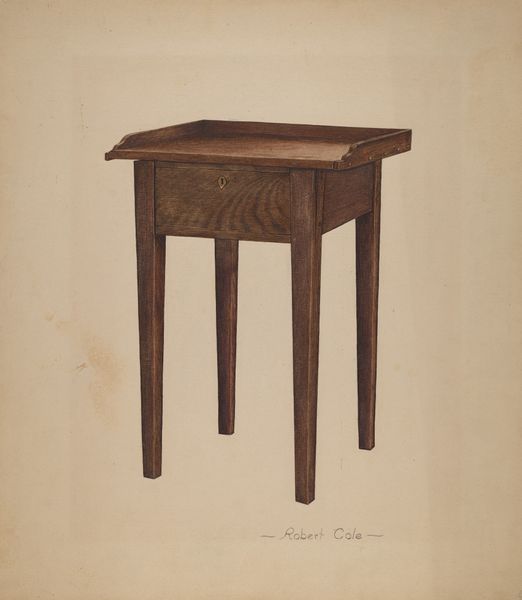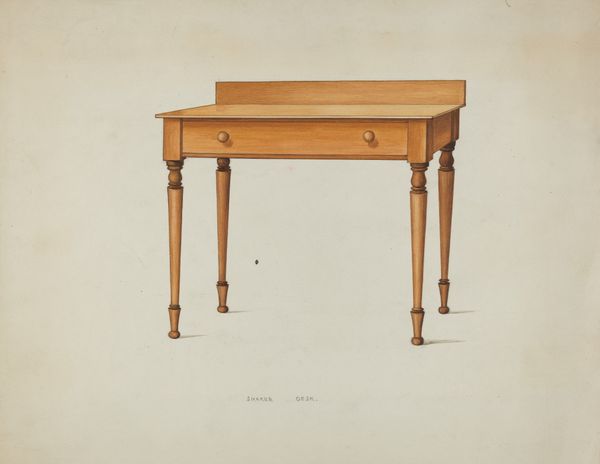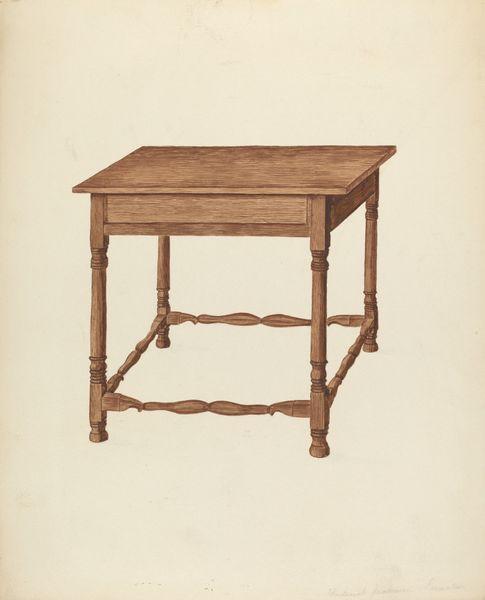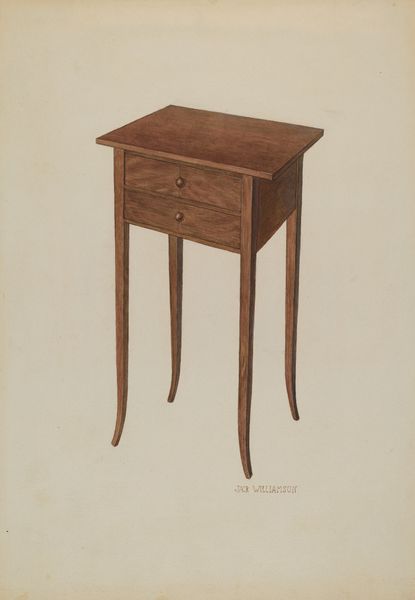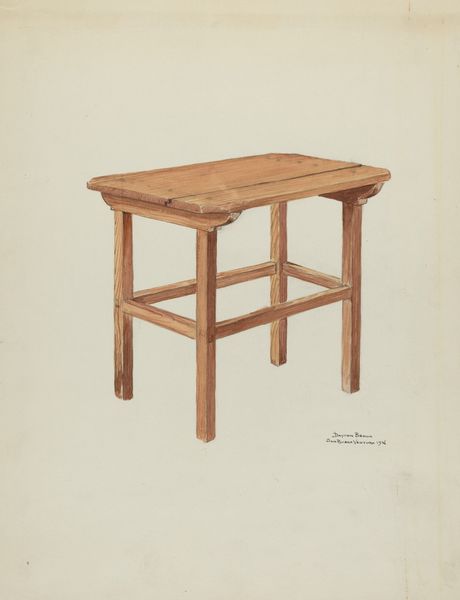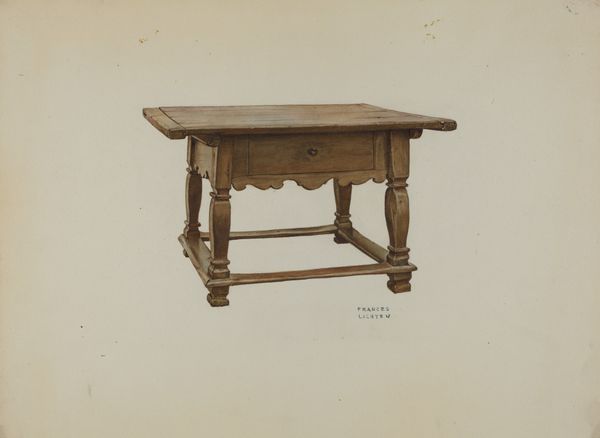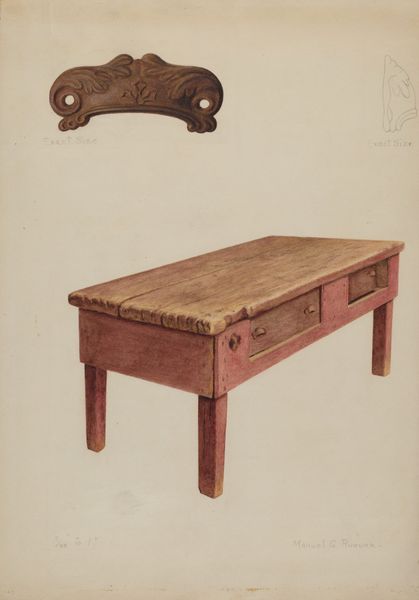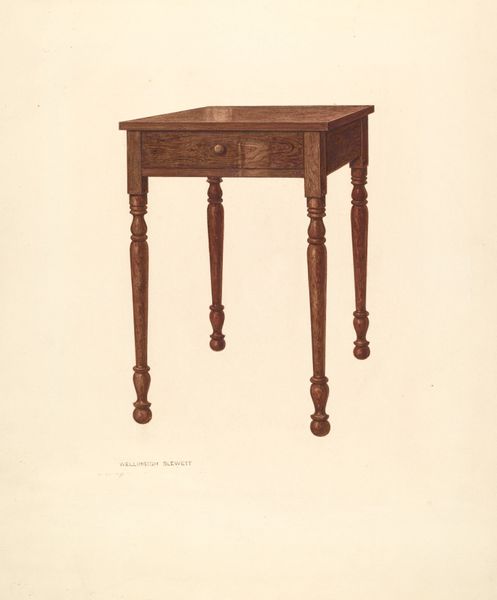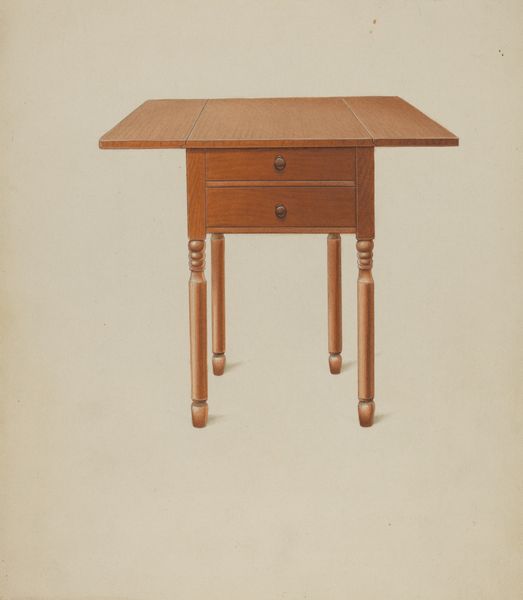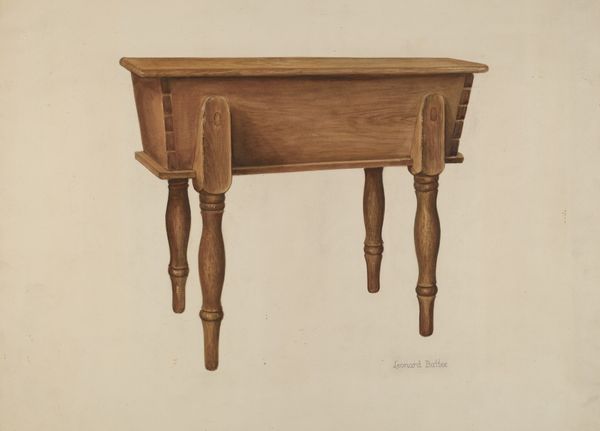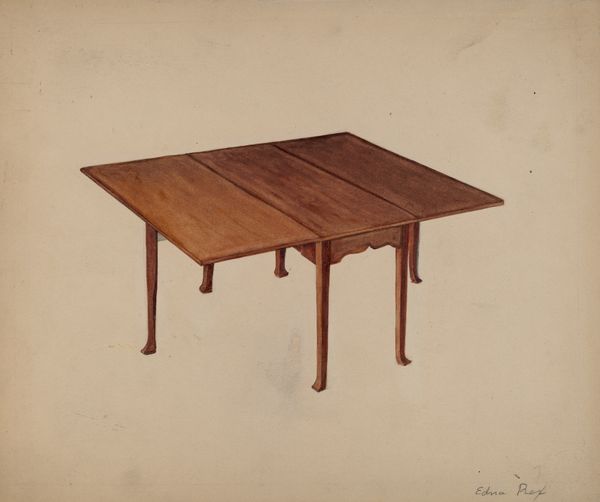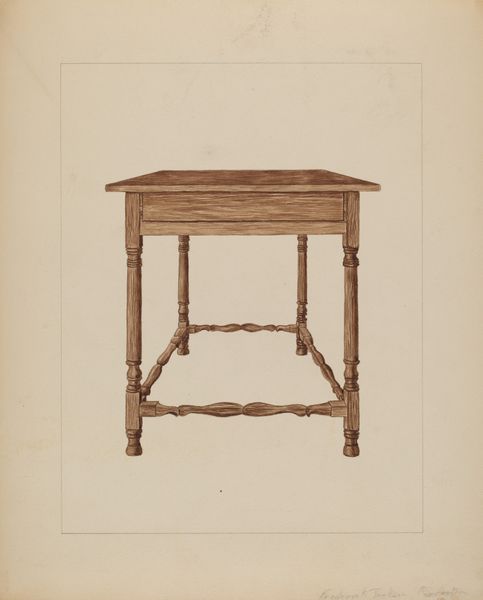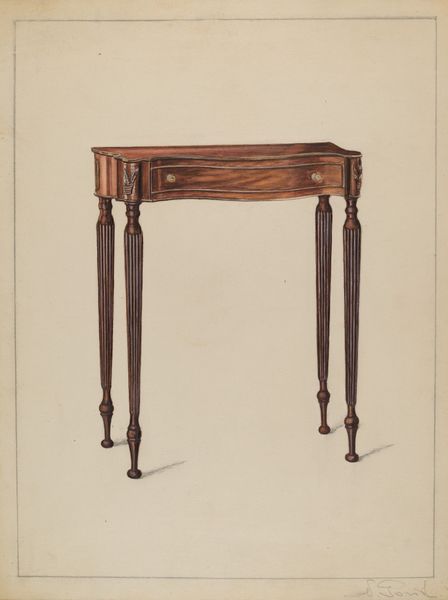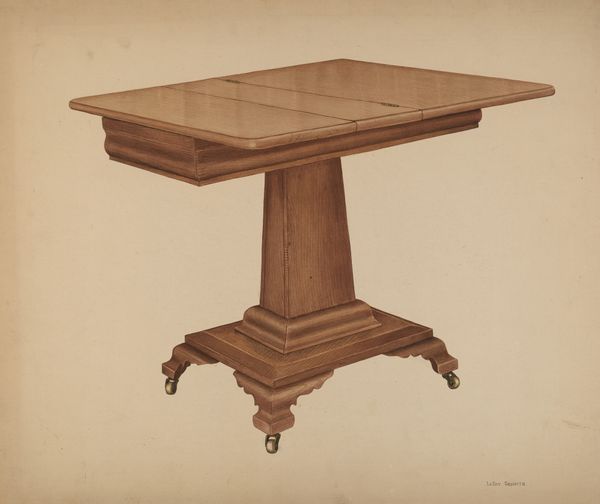
drawing, painting, watercolor
#
drawing
#
painting
#
watercolor
#
watercolor
#
realism
Dimensions: overall: 29.2 x 35.5 cm (11 1/2 x 14 in.) Original IAD Object: 43"square with 2 folding legs.
Copyright: National Gallery of Art: CC0 1.0
Editor: So here we have Carl Buergerniss's "Cherry Table," from around 1936, a drawing and painting made with watercolors. It feels so still and domestic. What do you see in this piece beyond a simple table? Curator: I see a loaded space! Buergerniss, during the Great Depression, focused on objects that spoke of both domestic comfort and economic anxieties. These kinds of tables, particularly within a growing middle class, signified a level of attained stability. Have you considered how an object like a simple table can reinforce, or perhaps even challenge, social hierarchies during times of widespread economic distress? Editor: That's fascinating. It does feel like more than just a table now. I hadn't thought about it as a symbol of stability during a time of crisis. So, are you saying Buergerniss is making a commentary on class? Curator: It's a possibility. We can consider how realism itself, in this context, becomes a statement. By depicting such an ordinary object with such careful detail, Buergerniss draws attention to the material conditions of everyday life. What do you make of the artist's choice to depict the table partially unfolded? Editor: It could mean that it’s trying to represent something more, beyond its purely functional use? Maybe implying a flexibility, but that might be a stretch… Curator: Not at all. It encourages us to question the singular function or static nature of this object and consider its multiple configurations, in which case it makes it more symbolic than functional. This table invites questions about usage and adaptability during a time of resourcefulness and adaptation. I'd say there is room to see the representation of these forms and how the painting process has translated into social context and gender. Editor: That makes so much sense! I'll never look at a simple object the same way again. It's a reminder of how art reflects social issues, particularly those tied to class and economics. Curator: Exactly. The object, like the period it’s emerged from, opens avenues for examining issues of identity and economics.
Comments
No comments
Be the first to comment and join the conversation on the ultimate creative platform.
